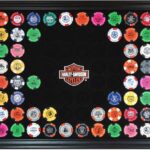I. Understanding Upcycled Atlantic Salmon: Definition and Importance
II. The Upcycling Process: How Atlantic Salmon is Transformed
III. Benefits of Choosing Upcycled Atlantic Salmon for Sustainability and Nutrition
Understanding Upcycled Atlantic Salmon: Definition and Importance
When we hear the term upcycled Atlantic salmon, it might raise a few eyebrows or conjure up questions. What exactly does it mean? And why should we care? Let’s dive into the world of upcycling and discover why this innovative approach to food is gaining traction and importance in our lives today.
What is Upcycled Atlantic Salmon?
At its core, upcycling refers to the process of taking products that would otherwise be discarded and transforming them into something valuable. In the case of upcycled Atlantic salmon, it often involves using parts of the fish that are typically overlooked or wasted during food production. This can include scraps like skin, bones, or even parts of the fish that don’t make it to the market for various reasons.
In essence, upcycled Atlantic salmon is about making the most out of every fish, ensuring that we don’t let valuable resources go to waste. This practice not only helps reduce the environmental impact of fish farming and fishing but also encourages a more sustainable approach to our food systems.
Why is Upcycling Important?
- Reducing Food Waste: Did you know that nearly one-third of food produced globally is wasted? Upcycling helps combat this by ensuring that every part of the fish is utilized. This way, we can significantly reduce the amount of food that ends up in landfills.
- Promoting Sustainability: The fishing industry has faced its fair share of challenges, from overfishing to environmental degradation. By upcycling, we are endorsing a more sustainable means of production, which can help preserve fish populations and their habitats.
- Enhancing Nutritional Value: Upcycled Atlantic salmon is not just about reducing waste; it can also be a powerhouse of nutrients! The parts of the fish that are upcycled often contain high levels of omega-3 fatty acids, protein, and essential vitamins that are vital for a balanced diet.
- Innovative Culinary Opportunities: Upcycling offers a chance to get creative in the kitchen! Chefs and home cooks alike can explore new recipes and techniques to incorporate upcycled ingredients, leading to exciting and unique dishes that surprise and delight the palate.
A Call to Action
So, why not consider upcycled Atlantic salmon the next time you’re at the grocery store or ordering at a restaurant? By choosing products that prioritize sustainability and reduce waste, you’re not just making a delicious choice for yourself but also contributing to a healthier planet.
In a world where every choice counts, understanding and embracing upcycled products can lead to profound positive changes. Get ready to explore the possibilities and be part of this exciting movement towards sustainability!
The Upcycling Process: How Atlantic Salmon is Transformed
Have you ever wondered how something as delicious as Atlantic salmon can be reimagined and repurposed into even more amazing products? It’s a fascinating journey from the ocean to your plate, and understanding the upcycling process can give you a greater appreciation for this sustainable choice. Let’s dive in!
What is Upcycling?
At its core, upcycling is all about taking what might be considered waste and turning it into something valuable and useful. In the case of Atlantic salmon, this process involves utilizing parts of the fish that are typically discarded. By upcycling, we not only reduce waste but also create new products that contribute to a more sustainable food system.
The Journey of Upcycled Atlantic Salmon
So, how does this transformation take place? Here’s a step-by-step look at the upcycling process:
- Harvesting: The journey begins at the fishery. When Atlantic salmon are harvested, certain parts—like skin, bones, and even those little bits of flesh that don’t make it to the fillet—are often left behind. Instead of tossing these parts away, they are collected for the upcycling process.
- Processing: Once gathered, these fish parts are cleaned and processed. This might involve drying or cooking the byproducts to enhance their flavor and nutritional value. Think of it as giving these ingredients a second life!
- Creating New Products: After processing, the upcycled salmon can take on various forms. It might become delicious salmon jerky, nutritious pet food, or even protein powders. The possibilities are endless, and each product offers a unique way to enjoy this ocean delicacy.
- Distribution: Finally, upcycled Atlantic salmon products are packaged and sent out to stores and restaurants. This is where you, the consumer, come into play! By choosing these products, you are not only indulging in tasty food but also supporting sustainable practices.
Why It Matters
The upcycling process is not just a clever way to reduce waste; it’s also a smart approach to resource management. By utilizing every part of the fish, we minimize our environmental footprint and make the most out of what nature provides. This practice helps conserve fish populations and supports the health of our oceans, which is something we can all get behind!
Get Involved!
Now that you know how upcycled Atlantic salmon is transformed, why not give it a try? Here are a few tips on how to get involved:
- Look for products labeled as “upcycled” when shopping for salmon or seafood in general.
- Support local businesses that prioritize sustainability in their sourcing.
- Share your upcycled salmon creations on social media to inspire your friends and family!
In conclusion, the upcycling process of Atlantic salmon is a beautiful example of how we can innovate and create while being kind to our planet. It’s a win-win situation—delicious food and a healthier environment, all starting from the sea! So next time you enjoy a dish with upcycled salmon, you’ll not only taste the flavors but also appreciate the thoughtful journey it took to get to your table.
Benefits of Choosing Upcycled Atlantic Salmon for Sustainability and Nutrition
When it comes to making food choices that benefit both our health and the planet, upcycled Atlantic salmon is a fantastic option. This innovative approach to food production not only reduces waste but also packs a nutritional punch! Let’s dive into the many benefits of choosing upcycled Atlantic salmon and why it should be on your shopping list.
1. A Sustainable Choice
One of the most compelling reasons to choose upcycled Atlantic salmon is its positive environmental impact. Upcycling involves repurposing by-products from the salmon production process that would otherwise go to waste. By choosing upcycled salmon, you’re:
- Reducing Food Waste: Upcycling helps minimize the significant amounts of fish parts that typically end up in landfills.
- Conserving Resources: Every time we upcycle, we’re making better use of the resources already used in salmon farming, which reduces the demand for new fish.
- Supporting Sustainable Fishing Practices: Many upcycled salmon products are sourced from responsible fisheries that prioritize environmental stewardship.
2. Nutritional Benefits
Not only is upcycled Atlantic salmon a great choice for the environment, but it also boasts impressive nutritional benefits. Salmon is already known for being a nutritional powerhouse, and upcycled varieties retain many of these benefits:
- Rich in Omega-3 Fatty Acids: These healthy fats are essential for brain health, heart health, and reducing inflammation in the body.
- High in Protein: Upcycled salmon is an excellent source of high-quality protein, which is vital for muscle repair and growth.
- Packed with Vitamins and Minerals: Salmon is loaded with B vitamins, selenium, and potassium, all of which contribute to various bodily functions.
3. Supporting Local Economies
Choosing upcycled Atlantic salmon can also have a positive impact on local economies. Many upcycled seafood brands work closely with local fishermen and suppliers, which fosters community growth and prosperity. By supporting these businesses, you’re:
- Encouraging Sustainable Jobs: Upcycling creates jobs in processing and distribution, helping to sustain local fisheries.
- Promoting Fair Trade Practices: Many upcycled products prioritize ethical sourcing, ensuring that workers are treated fairly and compensated adequately.
4. Culinary Versatility
Last but not least, upcycled Atlantic salmon is incredibly versatile in the kitchen! Whether you’re looking to whip up a quick salmon salad, a hearty chowder, or gourmet sushi, upcycled salmon can fit into a variety of recipes. Plus, it often comes in convenient formats like canned or pre-packaged, making it easy to incorporate into your meals.
In conclusion, when you choose upcycled Atlantic salmon, you’re not just making a meal choice; you’re making a statement about sustainability, nutrition, and community support. So next time you’re at the grocery store, keep an eye out for this eco-friendly option and enjoy the many benefits it brings!










Comments